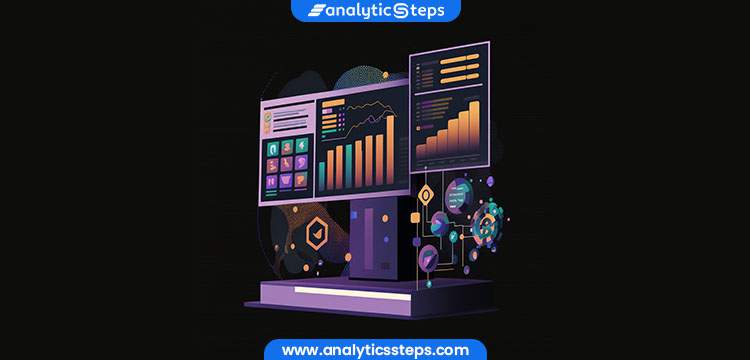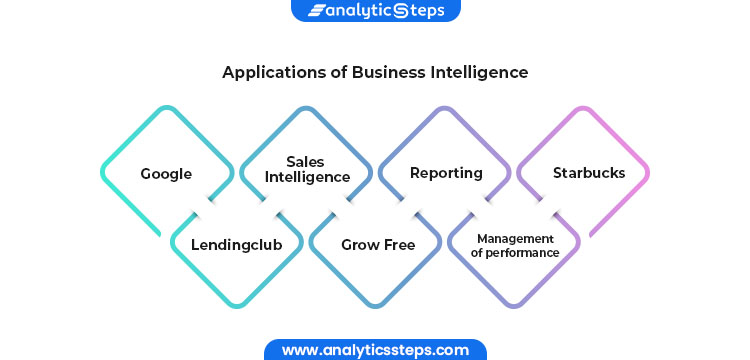
To remain competitive, organizations must have a clear perspective of all their data, which is where business intelligence (BI) technologies come in. After all, approximately half of all firms already utilize BI tools, and estimates show that this trend will continue in the coming years.
However, for individuals who haven't yet chosen a tool or are simply interested in learning more, it might be difficult to define BI. We prepared this comprehensive reference to educate individuals on what business intelligence is, how it works, and other topics.
Brief Introduction of Business Intelligence
The procedural and technical infrastructure that collects, saves, and analyses data generated by a company's activities is referred to as business intelligence (BI).
Data mining, process analysis, performance benchmarking, and descriptive analytics are all examples of business intelligence. BI analyzes all of a company's data and displays it in easy-to-understand reports, performance measurements, and trends that help management make choices.
The need for BI stemmed from the idea that managers with inaccurate or insufficient information make worse decisions than those with superior knowledge. Financial model creators refer to this as "garbage in, garbage out."
Business intelligence is the buzzword of a rapidly changing and expanding world. It is described as a set of concepts and approaches used to improve business decision-making through the use of data and fact-based systems. Business intelligence's goal is to improve decision-making in business concepts and analyses.
Business intelligence is more than a concept; it is a collection of concepts and processes. Decisions in business intelligence are made using analytics and gut feelings. Business Intelligence Procedure: BI (Business Intelligence) employs a set of procedures, technologies, and tools (such as Informatica/IBM) to convert raw data into relevant information, which is subsequently transformed into knowledge. Following that, certain helpful insights can be extracted manually and by software, and decision-makers can make an informed conclusion.
Also Read | Major Advantages of Using Business Intelligence in Your Startup
Business Intelligence Benefits
Businesses use BI for a variety of reasons. Many people utilize it to help with things like hiring, compliance, production, and marketing. BI is a basic business value; it's difficult to think of a business that wouldn't benefit from better information to operate with.
Some of the numerous advantages that businesses may reap by incorporating BI into their business models include faster, more accurate reporting and analysis, enhanced data quality, more employee satisfaction, lower expenses and higher revenues, and the capacity to make better business decisions.
-
Increase sales:
By providing detailed reports, a company Intelligence system can detect sales trends, potential product enhancements, client preferences, and company prospects. This priceless information can be utilized to boost sales and aid in negotiations between firms and suppliers. View an illustration of effective Sales Performance Analytics utilizing business intelligence.
-
Improved decision-making:
Businesses are better positioned to make meaningful decisions when they use the aforementioned accurate reporting solutions. Business Intelligence can set up alerts regarding overall performance by analyzing productivity and income per department, allowing a business plan to be clearly described. Companies may give important information to stakeholders by exploiting up-to-date data, beating out competitors and retaining a lead position.
-
Recognise opportunities and trends:
Data analysis also enables businesses to compare their strengths and shortcomings to those of competitors, allowing them to analyze market conditions and discover trends. This means that profitable possibilities can be taken advantage of while possible company issues are handled.
-
Efficiency of operations:
The simplification of diverse data sources using Business Intelligence will aid overall operations by saving management time in tracking down information. Employees will also have access to relevant and trustworthy data, allowing them to consider the consequences of their decisions and, as a result, establish both short- and long-term corporate objectives.
-
Compliance and security:
Centralize data to increase accuracy and transparency, making it easier to detect errors, security threats, and compliance hazards. Look for a product that is secure, compliant, globally available, and trusted when assessing business intelligence tools. It should also include capabilities like data visualization, shared dashboards, artificial intelligence, and machine learning to make BI insights available to the entire organization.
-
Customer fulfillment:
Implementing Business Intelligence software enables businesses to gather client input in real time, recognising patterns, pinpointing difficulties, and providing better overall service to customers. Business Intelligence provides numerous advantages to organizations of all sizes. Organizations may assess and manage corporate data by working with a reputed software vendor, optimizing procedures and ensuring a competitive edge.
Also Read | Business Intelligence in ERP: Role and Benefits
Applications of Business Intelligence
The extensive usage of business intelligence technologies has resulted from the need to increase sales, better understand user-product interactions, and personalize recommendations. As a result, more business intelligence firms have developed to assist organizations in gathering data and developing better processes.
The desire to make educated judgments quickly drives the growth of the business intelligence profession. Some of the applications have been listed below:

Applications of Business Intelligence
-
Google's People Analytics:
Google's robust data culture includes a unit under HR known as "People Analytics." Its mission is to bring facts to light on employment-related issues such as how managers should be evaluated and, more broadly, whether managers should exist at all.
That's true, one of the questions they looked into was "Do managers matter?" They discovered that the answer was yes. At Google, at least. Employees with higher-rated bosses performed better on the job and stayed with the company longer.
The team then investigated what makes a great manager, conducting interviews with the company's top and bottom-rated managers. They derived eight keys to Google management success, such as "is results-oriented" and "does not micromanage." These data-driven insights became the core of their manager performance appraisals.
-
Lendingclub's A/B testing process:
This digital lender previously struggled with A/B testing, which is a sort of product optimization in which two slightly different offerings are tried on by an audience to evaluate which one they prefer. The LendingClub team could list a plethora of tests they wished to run, but the testing process was so time consuming that they only ran approximately four every year.
That changed when they became a Heap customer. Heap's maximalist data gathering simplified testing. Because of the influx of business intelligence, the organization was able to execute 12 A/B tests every week – more than 100 times their prior rate.
-
Sales Intelligence:
A primary application of BI focuses on the point at which your company meets the client. Customer negotiating is an important talent that every company's sales staff should cultivate. It might be difficult at times to move leads through the pipeline and persuade potential customers to purchase your product or service. This process is becoming smoother and more predictable when corporate analytics and intelligence are applied.
Business intelligence gathers information on certain KPIs such as customer demographics, conversion rates, sales metrics, and so on. The data is then organized into structured visualizations such as graphs, pie charts, and scattergrams. From this data, users can find trends that provide insights into customer behavior and business operations. Knowing your customer allows you to better serve them!
-
Grow Free's Software Demo:
This business intelligence firm collaborated with Heap to discover what users wanted from free software trials: data visualization. Despite the fact that it was merely a rough draft, it provided an idea of what Grow's product could do. According to Heap's research, users who created visualizations on their first session were five times more likely to become paying clients.
That caught me off guard. Grow had initially thought that new clients valued accuracy over speed, thus their free software trial began with a lengthy setup process. To begin building visualizations, users had to link Grow to all of their diverse data sources – their CRM, online data, finance data, and so forth.
-
Reporting:
Reporting is a critical business application of BI. As previously said, business intelligence tools collect and analyze unstructured data sets in addition to organizing and generating various types of reports. Staffing, costs, sales, customer service, and other procedures are examples of these.
Reporting and data analysis are similar, yet they differ greatly in terms of aim, delivery, duties, and value. Reporting is the practice of organizing data into summaries in order to track corporate performance. The process of exploring data to generate insights that may be used to improve business practices is known as analysis.
-
Management of performance:
Organizations can use BI software to track target progress based on pre-defined or customisable timeframes. Data-driven objectives could include project completion deadlines, target delivery times, or sales targets. For example, if you want to meet a specific sales goal, your BI system can analyze previous months' data and recommend a suitable target based on historical performance.
-
Starbucks' reward Program:
Starbucks' rewards programmes will have 27 million users by 2022, and the rewards mobile app is a major reason why mobile transactions accounted for 72 percent of the company's sales in the United States. Although the app provides consumers with advantages such as free beverages, Starbucks benefits from its popularity in terms of data.
The coffee shop uses information on individual purchase behaviors to target customers with tempting bargains, causing them to return to buy more of their favorite lattes or muffins. While it is true that this method only works for clients who have smartphones, the app is not a new customer recruitment tool; rather, it is aimed at maintaining regulars.
Summing Up:
BI is an important tool for businesses to help them make better decisions, which may lead to profitability. BI systems help identify trends and business problems that need to be focused on. They provide several benefits to businesses, and the evolution of BI systems is going to continue in the future.
As business intelligence is constantly growing to stay up with corporate needs and technology, we identify current trends each year to keep users up to date on advancements. Recognise that artificial intelligence and machine learning will continue to evolve, and that firms can incorporate AI insights into a larger BI strategy. As businesses attempt to become more data-driven, initiatives to exchange and collaborate on data will grow. Data visualization will become ever more important as teams and departments collaborate.
There are several applications for business intelligence, and these are only a few of the most common ones. From a single tool, users can gain insights about their consumers, develop extensive reports and intuitive visualizations, and monitor company performance KPIs. Don't forget to look at our interactive needs template, detailed comparison report, and industry pricing guide to assist you in choosing the best BI tool for your company!

